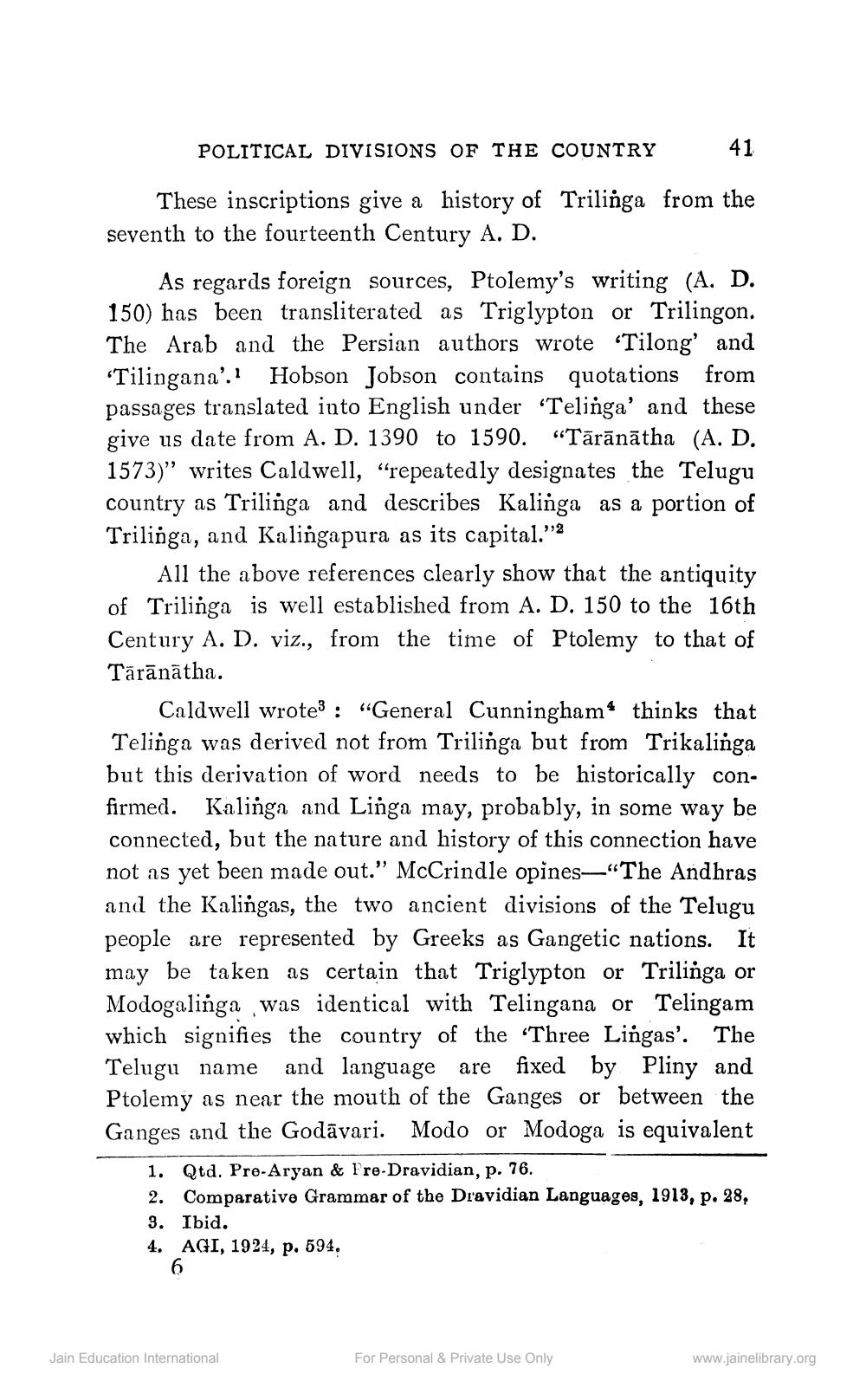________________
POLITICAL DIVISIONS OF THE COUNTRY
41
These inscriptions give a history of Trilinga from the seventh to the fourteenth Century A. D.
As regards foreign sources, Ptolemy's writing (A. D. 150) has been transliterated as Triglypton or Trilingon. The Arab and the Persian authors wrote Tilong' and 'Tilingana'.' Hobson Jobson contains quotations from passages translated into English under 'Telinga' and these give us date from A. D. 1390 to 1590. “Tārānātha (A. D. 1573)” writes Caldwell, “repeatedly designates the Telugu country as Trilinga and describes Kalinga as a portion of Trilinga, and Kalingapura as its capital."
All the above references clearly show that the antiquity of Trilinga is well established from A. D. 150 to the 16th Century A. D. viz., from the time of Ptolemy to that of Tärānātha.
Caldwell wrote : "General Cunningham* thinks that Telinga was derived not from Trilinga but from Trikalinga but this derivation of word needs to be historically confirmed. Kalinga and Linga may, probably, in some way be connected, but the nature and history of this connection have not as yet been made out." McCrindle opines—“The Andhras and the Kalingas, the two ancient divisions of the Telugu people are represented by Greeks as Gangetic nations. It may be taken as certain that Triglypton or Trilinga or Modogalinga was identical with Telingana or Telingam which signifies the country of the Three Lingas'. The Telugu name and language are fixed by Pliny and Ptolemy as near the mouth of the Ganges or between the Ganges and the Godāvari. Modo or Modoga is equivalent
1. Qtd. Pre-Aryan & Pre-Dravidian, p. 76. 2. Comparative Grammar of the Dravidian Languages, 1913, p. 28, 3. Ibid. 4. AGI, 1924, p. 594,
Jain Education International
For Personal & Private Use Only
www.jainelibrary.org




